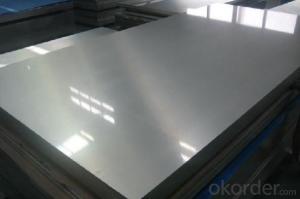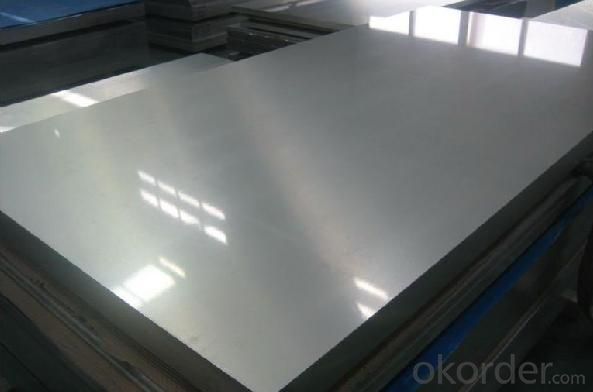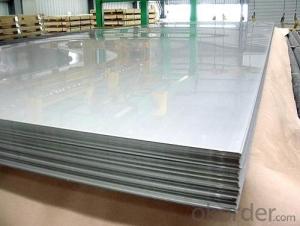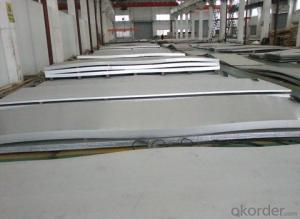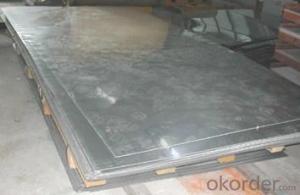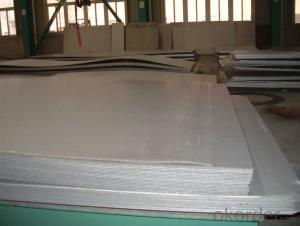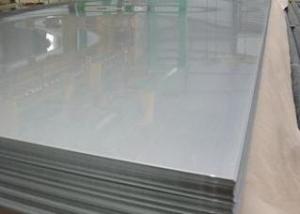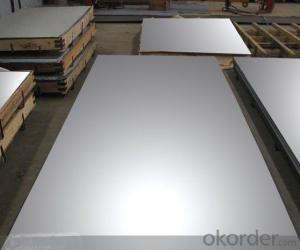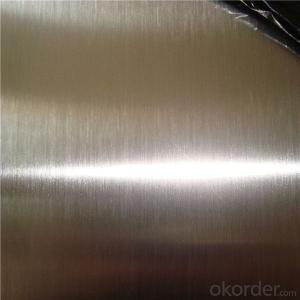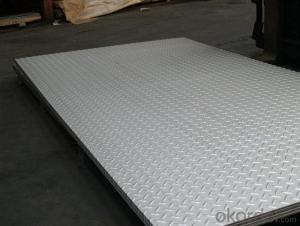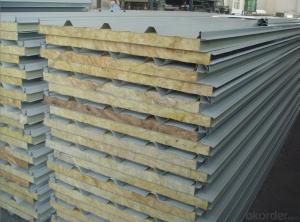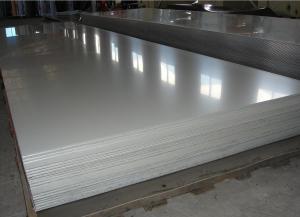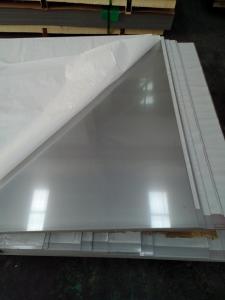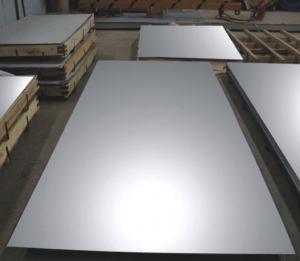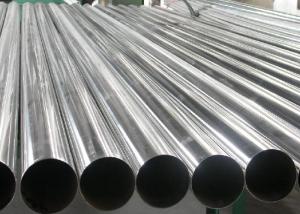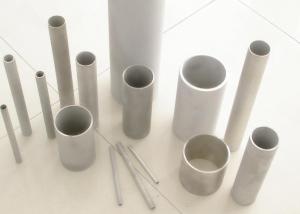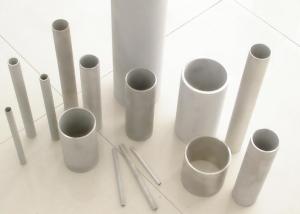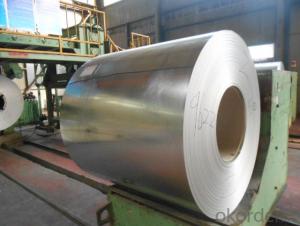Stainless Steel Sheet-430
- Loading Port:
- China Main Port
- Payment Terms:
- TT OR LC
- Min Order Qty:
- -
- Supply Capability:
- -
OKorder Service Pledge
OKorder Financial Service
You Might Also Like
Quick Details
| Grade: | Standard: | Length: | |||
| Thickness: | Width: | Place of Origin: | |||
| Brand Name: | Type: | Application: | |||
| Certification: | surface: | Technical treatment: |
Packaging & Delivery
| Packaging Detail: | Export standard package :bundled wooden box or as per requirement |
| Delivery Detail: | Within 15days after received 30%T/T of deposit |
Specifications
Premier Stainless steel sheet
1.CR 2B stainless steel sheet
2.HR 2B staibnless steel sheet
3.stainless steel sheet
Product Information
Product Name Stainless Steel sheets | ||
Material | 201/202/301/304/304L/316/316L/410/420 |
|
Technique | Cold Rolled, Cold Drawn, Hot Rolled |
|
Standard | ASTM,AISI,GB,DIN |
|
Thickness | 0.3mm-120mm or as your requirement |
|
Width | 1000mm-2500mm or as your requirement |
|
Length | 1000mm-6000mm or as your requirement |
|
Surface Treatment | No.1,2B,No.4,BA,2B,hairline,8k or as your needs |
|
Packing | 1. Export sea worthy package + water proof paper + wooden pallet 2. Max Loading 26.5mt for each 20Gp container 3. Safe loading and fixing Professional Teams 4. Professional shipping line |
|
Delivery | Within 15days after received 30%T/T of deposit or L/C or according to the order quantity or upon negotiation |
|
Price Item | T/T,30%payment in advance,70%T/T after the copy of B/L or L/c at sight |
|
Application | Stainless Steel Sheets are widely used in below fields: 1: Construction field, shipping building industry 2: Petroleum and Chemical Industries 3: Food and Mechanical Industries |
|
Quality control | Mill Test Certificate is supplied with shipment |
|
Export | USA ,Southeast Asia, Mid East, Africa, Eastern Asia, Western Europe and So on. |
|
- Q: Can stainless steel sheets be used for outdoor applications?
- Certainly, outdoor applications can utilize stainless steel sheets. Due to its exceptional resistance to corrosion, stainless steel emerges as an ideal material for outdoor use. It can endure exposure to moisture, saltwater, and harsh weather conditions without succumbing to rust or deterioration. Outdoor structures like fences, handrails, roofs, and cladding regularly employ stainless steel sheets. Furthermore, outdoor appliances, equipment, and decorative elements also benefit from their utilization. Moreover, stainless steel sheets can be painted or coated to amplify their resistance against outdoor elements and match desired aesthetics. In summary, stainless steel sheets prove to be a robust and dependable option for outdoor applications.
- Q: Are stainless steel sheets good for cryogenic storage?
- Yes, stainless steel sheets are suitable for cryogenic storage due to their excellent resistance to low temperatures and high strength. They can withstand extreme cold without becoming brittle or losing structural integrity, making them a reliable choice for storing materials at cryogenic temperatures.
- Q: What are the different surface finishes available for stainless steel sheets?
- There are several different surface finishes available for stainless steel sheets, each offering unique characteristics and aesthetics. 1. No.1 Finish: This is the most common and widely used finish for stainless steel sheets. It has a rough, dull appearance with visible grain lines. No.1 finish is obtained by hot rolling the stainless steel and is suitable for applications where a rough finish is acceptable. 2. No.2B Finish: This finish is obtained by cold rolling the stainless steel and then annealing it, resulting in a smooth, reflective surface with a slightly dull appearance. It is commonly used for kitchen appliances, architectural accents, and decorative purposes. 3. No.2D Finish: Similar to No.2B finish, No.2D finish is achieved by cold rolling and annealing the stainless steel. However, it has a smoother and shinier appearance, making it suitable for applications requiring a more polished look. 4. No.3 Finish: Also known as a brushed finish, No.3 finish is achieved by polishing the stainless steel with abrasive belts or brushes. It has a unidirectional satin-like appearance, often used for decorative purposes in architecture and interior design. 5. No.4 Finish: This finish is obtained by polishing the stainless steel with finer abrasive belts or brushes than No.3 finish. It has a more refined and smoother appearance, often used for decorative purposes, such as elevator panels, kitchen equipment, and automotive trim. 6. No.8 Finish: Also known as a mirror finish, No.8 finish is achieved by polishing the stainless steel with progressively finer abrasive materials until a highly reflective surface is obtained. It provides a glossy, mirror-like appearance, ideal for architectural and decorative applications. 7. Hairline Finish: Hairline finish is achieved by mechanically polishing the stainless steel surface with a fine abrasive material. It creates a subtle, linear pattern with a matte appearance, commonly used for architectural accents, appliances, and decorative items. These are some of the most common surface finishes available for stainless steel sheets. The choice of finish depends on the desired aesthetics, functionality, and application requirements.
- Q: Are stainless steel sheets suitable for decorative applications?
- Yes, stainless steel sheets are suitable for decorative applications. Stainless steel is a versatile material that offers both durability and aesthetic appeal, making it ideal for various decorative purposes. It is commonly used in interior design, architecture, and furniture manufacturing due to its sleek and modern look. Stainless steel sheets can be shaped, cut, and fabricated into different patterns, textures, and finishes, allowing for endless design possibilities. Whether it is for wall cladding, backsplashes, countertops, or decorative accents, stainless steel sheets can enhance the visual appeal of any space. Additionally, stainless steel is resistant to corrosion, staining, and heat, ensuring its long-lasting beauty even in challenging environments.
- Q: Can stainless steel sheets be used for heat exchangers?
- Yes, stainless steel sheets can be used for heat exchangers. Stainless steel has excellent corrosion resistance, high thermal conductivity, and good mechanical properties, making it an ideal material choice for heat exchanger applications.
- Q: What are the different types of stainless steel sheet surface patterns available?
- There is a wide range of surface patterns available for stainless steel sheets, each possessing its own distinct qualities and aesthetic charm. Some of the most frequently encountered patterns are as follows: 1. Brushed: This texture is obtained by gently brushing the stainless steel surface with an abrasive material, resulting in a smooth and uniform appearance. It is commonly employed in scenarios where a sleek and contemporary appearance is desired. 2. Mirror: This pattern entails polishing the stainless steel surface to achieve a highly reflective finish, akin to that of a mirror. It is often utilized in decorative applications where a high degree of shine is sought after. 3. Satin: Also referred to as a brushed or hairline finish, this pattern is achieved by uniformly applying a fine abrasive substance to the stainless steel surface in a linear motion, resulting in a matte effect. It is commonly employed in architectural and kitchen applications. 4. Embossed: This pattern involves imprinting a design or texture onto the stainless steel surface using a patterned roller or press. It can produce a variety of decorative effects, such as raised or recessed patterns, and is frequently utilized in interior design and automotive applications. 5. Perforated: In this pattern, the stainless steel sheet is punctured with a series of small holes arranged in a regular pattern. This allows for improved ventilation and drainage capabilities and is commonly employed in architectural and industrial applications. 6. Etched: This pattern involves chemically treating the stainless steel surface to create a design or pattern. It can be used to produce intricate and detailed designs, making it popular in decorative and artistic applications. These examples merely scratch the surface of the diverse range of surface patterns available for stainless steel sheets. The choice of pattern often depends on the desired application, functionality, and visual appeal.
- Q: How do you cut intricate designs in stainless steel sheets?
- One effective way to cut intricate designs in stainless steel sheets is by using a laser cutting machine. Laser cutting technology allows for precise and intricate cuts, making it ideal for complex designs. The laser beam melts, burns, or vaporizes the material, resulting in a clean and accurate cut without the need for additional finishing. This method ensures high-quality and precise cuts in stainless steel sheets.
- Q: Can stainless steel sheets be used in architectural designs?
- Certainly, architectural designs can definitely incorporate stainless steel sheets. Stainless steel is a highly adaptable material that offers numerous advantages for architectural purposes. It is renowned for its durability, resistance to corrosion, and attractive appearance, which has made it a favored option among architects and designers. Stainless steel sheets can be utilized in various architectural elements, including cladding, roofing, facades, and decorative features. The sleek and contemporary look of the material adds a touch of sophistication to any design, whether it be a residential building, commercial structure, or public space. One of the primary benefits of stainless steel sheets is their ability to resist corrosion, making them suitable for both interior and exterior use. They can withstand severe weather conditions, UV radiation, and pollutants, ensuring a long-lasting and low-maintenance solution for architectural projects. Furthermore, stainless steel sheets are available in a variety of finishes, such as brushed, polished, and patterned, allowing architects to create distinctive and visually appealing designs. The material can be easily shaped, welded, and fabricated into various forms, enabling architects to achieve their desired architectural vision. Stainless steel sheets also provide excellent fire resistance, making them ideal for applications where safety is a priority. They are non-combustible and have a high melting point, offering additional protection in the event of a fire. Moreover, stainless steel is an environmentally friendly choice. It is 100% recyclable, with a high recycling rate, reducing the demand for new raw materials and helping to minimize waste. In summary, stainless steel sheets are a versatile and durable material that can be effectively utilized in architectural designs. Their resistance to corrosion, aesthetic appeal, fire resistance, and sustainability make them a popular choice among architects and designers for a wide range of applications.
- Q: Can stainless steel sheets be used for architectural columns?
- Yes, stainless steel sheets can be used for architectural columns. Stainless steel is a highly durable and versatile material that offers excellent resistance to corrosion, making it suitable for both indoor and outdoor applications. The sleek and modern appearance of stainless steel also adds an aesthetic appeal to architectural designs. Additionally, stainless steel sheets can be customized to various sizes and shapes, allowing for flexibility in column design. Whether it is for residential, commercial, or industrial projects, stainless steel sheets are a popular choice for architectural columns due to their strength, longevity, and visual appeal.
- Q: Are stainless steel sheets suitable for food processing and storage?
- Yes, stainless steel sheets are highly suitable for food processing and storage. Stainless steel is a popular choice in the food industry due to its numerous benefits. Firstly, stainless steel is a non-reactive material, meaning it does not release any harmful chemicals or flavors into the food. This makes it safe for storing and processing various types of food, including acidic and alkaline ingredients. Stainless steel is also resistant to corrosion and rust, ensuring the hygiene and longevity of the food products. Moreover, stainless steel has excellent heat resistance, allowing it to withstand high temperatures during cooking and processing without warping or deforming. It also has a smooth and non-porous surface, which makes it easy to clean and maintain. This is particularly important in food processing facilities where maintaining cleanliness and hygiene is crucial. Additionally, stainless steel is a durable material that can withstand heavy usage and frequent cleaning. It is resistant to impact, staining, and scratching, making it ideal for food processing equipment and storage containers that are subject to regular wear and tear. Overall, stainless steel sheets are highly suitable for food processing and storage due to their non-reactive nature, corrosion resistance, heat resistance, easy maintenance, and durability. They provide a safe and hygienic environment for food processing, ensuring the quality and integrity of the food products.
Send your message to us
Stainless Steel Sheet-430
- Loading Port:
- China Main Port
- Payment Terms:
- TT OR LC
- Min Order Qty:
- -
- Supply Capability:
- -
OKorder Service Pledge
OKorder Financial Service
Similar products
Hot products
Hot Searches
Related keywords
